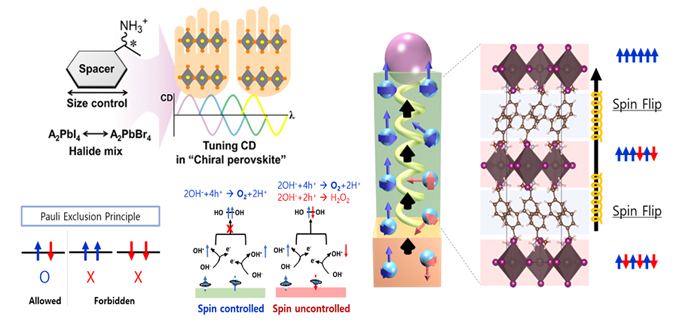Since the chirality-induced spin selectivity (CISS) effect is based on the chirality of the organic molecules, inorganic semiconductor materials are rarely considered to exhibit chiral properties. However, in 2017, we firstly reported that remarkable chiral optical properties (g-factor) could be developed in organic-inorganic hybrid perovskite (OIHP) semiconductors through a chiral transition. Our group utilizes a CISS effect for enhancing hydrogen generation efficiency, while suppressing side reactions in photoelectrochemical (PEC) water splitting. A recent study has discovered the spin-filter technology that allows only electrons having a spin in a specific direction to be selectively transferable. It is also possible for us to develop a stacked spin-control system based on the chiral 2 dimensional (2D) perovskite on top of the photoelectrode. Due to the high CISS effect (> 80 %) of chiral perovskite semiconductors, it is expected that an innovative spin-driven green hydrogen-producing water splitting device could be realized if the spin-alignment of electrons is effectively controlled when combined with PEC water splitting device.






